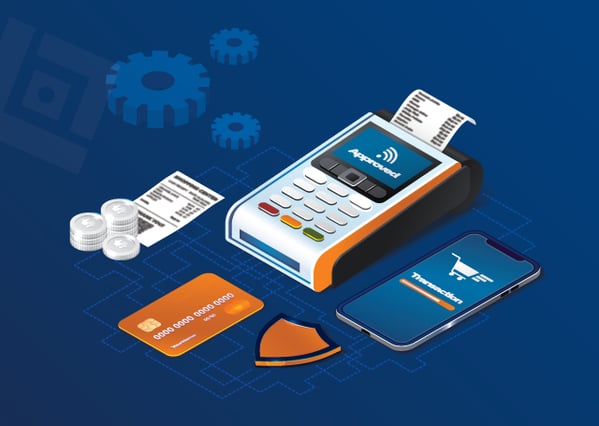
In the insurance industry, there’s no “business as usual.” Regulations, processes, procedures and compliance qualifications, consistently change which impact how professionals need their technology solutions to respond to industry demands.
Complex software requires robust testing, and insurance applications are no exception. As these systems upgrade their technology platforms, digital user experience and performance capabilities, it takes a skilled QA team to provide excellent quality assurance.
With such complexity, where do you begin? What’s the best way to approach insurance company software testing?
In this guide, we delve into the intricacies of insurance company software testing, exploring how to test insurance domain applications and overcome common testing challenges.
What Are Insurance Domain Applications?
Insurance domain applications are software programs that allow professionals within the insurance industry to carry out crucial tasks including policy form creation, billing policy renewal, underwriting and data management. Because the insurance domain is heavily regulated, these applications are specifically designed for companies within the domain to remain compliant and safeguard all sensitive consumer data.
QA teams test insurance domain applications to validate the software’s ability to uphold industry standards across industry-related activities. Test cases for insurance applications confirm the security, performance, quality, durability, and user experience of the software.
Key Components of an Insurance Applications
An insurance company encompasses multiple business areas that each follow their own set of standards and procedures in order to maintain compliance and uphold industry standards. When testing, QA engineers should thoroughly examine and test these key components of insurance applications:
-
Underwriting System
Simply put, an underwriter evaluates the risks of providing insurance to a customer before accepting their application. The process of underwriting evaluates all potential risks, then determines an expected premium amount for the customer. Insurance companies examine a variety of criteria when creating a risk profile for a potential client, including:
- Driving records
- Medical records
- Lifestyle
- Place of residence
- Employability
- Income details
In order to deliver a successful system to market, QA teams must test the following modules:
- Admin Module: Here’s where the company defines all the complex business rules of their underwriting guidelines. This module helps underwriters keep track of all necessary parameters and rules for creating a risk profile.
- Guidelines Module: Within this module, underwriters follow the guidelines as predefined in the admin system to declare the risk parameters of a potential customer.
-
Quote System
Once the risks associated with a customer are evaluated, a quote is provided. A customer’s details and risk profile are sent to different carriers who then report to the firm agents an expected premium they can offer. When testing a quote system, your QA team should consider creating test cases that validate:
- The policy effective date
- The plans address the needs of each customer
- The rate structure for generating quotes
-
Case Management
After a quote is generated, it is shared with the customer. When the customer agrees to the expected coverage and premium, all carriers receive an informal request including the details of the customer.
The carriers analyze the customer’s details and provide a tentative offer to the firm agent. The firm agent then contacts the customer with all tentative offers from different carriers to finalize their insurance. Lastly, a formal request is created and sent to the carrier.
-
CRM Integration
A CRM is the backbone of an insurance application. Firms, vendors, brokers—insurance professionals across roles and divisions rely on the same set of data to deliver results to their customers. That’s why so many insurance applications support CRM integration for maintaining a common database across all users and customers. It’s up to QA testers to verify that all customer data integrates accurately and securely across all functions of the insurance domain application.
Challenges & Solutions When Testing Insurance Domain Applications
When testing insurance software, QA teams are likely to run into challenges centered around people, time, processes, technology, compliance and competition. Fortunately, your team can overcome these obstacles during your development cycle by knowing what to expect and how to shift your testing strategy.
-
Lack of Domain Knowledge
An insurance application can support a variety of insurance services including life, retirement, health and auto—yet, each of these insurance types has a unique workflow. Your in-house QA team may not have the domain knowledge crucial for testing all these aspects.
Solution: Professional insurance software testing service providers are experienced in verifying these complex workflows. Partner with an experienced team who already understands expected application workflows and who can create an effective QA strategy for your insurance software.
-
Legal Compliance
Insurance rules vary with state and federal laws. When the law changes, every insurance app must keep up with these updates. And with regulations in place to protect customer information, providing engineers a QA environment with valid testing data can be problematic.
Solution: Professional QA teams understand the value of customer data. Mask or encrypt critical details like credit card info, SSNs and phone numbers while testing the application.
-
Maintaining Regression Suites
In the insurance domain, there are different workflows for every insurance type—even times when certain sections of a workflow cross paths with others. A small change to one workflow can impact many, making it difficult for testers without a deep understanding of business rules to identify which regression tests need adjustments.
Solution: A comprehensive test case design strategy contributes very well when designing the regression suites. When the test cases for each feature are organized, your team can easily identify each relevant scenario requiring updates.
-
Frequently Changing Requirements
Frequent updates in the insurance app result in additional Dev and QA cycles. As these changes are often a high priority, both Dev and QA teams get minimal time to ship the changes. Without the guidance of experienced professionals, these rapid cycles can accidentally introduce risk and even app failure.
Solution: Understand the scope of your product and its changing requirements. Map the new behavior with the existing behavior to reduce the risk of introducing bugs into the production.
-
Complex Databases
Modules in an insurance app generally use a common database. It can be difficult at times to locate an object containing desired data. Multiple calls are made between different tables to find it. Furthermore, a lack of proper documentation creates a big challenge for performing back-end testing.
Solution: To deal with complex databases, your QA team should have sound knowledge of database testing to create complex queries. That’s because these queries enable QA engineers to fetch the required data and perform the desired tests.
-
Multiple Users and Roles
Many types of users access your insurance application, from agents and underwriters to carrier agents and customers. Each role expects a different user experience and requires different levels of permissions. It is critical that each type of user can access the system based on their permission level settings.
Solution: Maintain a definitions document where access rights for each level are defined. This way, your QA team can validate the application for each kind of user.
Does your team need more help? Get the guidance you need for testing your insurance domain application by choosing a reliable QA services provider like QASource. Our team of testing experts specialize in insurance company software testing and have years of experience implementing industry best practices within a comprehensive QA strategy. Get a free quote today.


